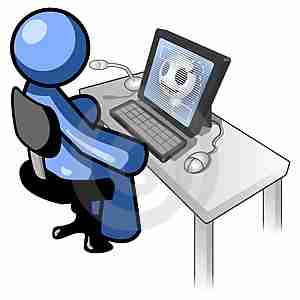
Best Computer Practices
With the
growth in the numbers of computers, printers and monitors on college campuses,
there has been a parallel increase in energy consumption at these institutions.
Many universities have seen electricity bills rise due to this rapid growth.
An
effort by every individual must be made to adopt energy-saving features and
practices, and to promote the best habits of computers users. It has been
found that a typical desktop computer and monitor may consume between 200 and
500 watts.
Unfortunately, much of this energy is ultimately wasted. According to
the Environmental Protection Agency, 30 to 40 percent of personal computers and
printers are kept on during the night and weekends. Also, it has been determined
that computers and printers are idle as much as 90 percent of the time during
the school or workday.
Therefore, appropriate actions need to be taken in order
to conserve energy. The list below offers some guidelines for efficient computer
use that each of us should utilize to contribute to UNI reduction in energy
consumption. These guidelines also provide information that dispels some common
myths. Most of these tips are simply common sense but often were not considered
as computers entered our day-to-day lives.
Six important TIP of using computers
- Turn off your computer, monitor and personal printer when you leave. If your computer is going to be inactive for more than 16 minutes, the energy needed to run the computer outweighs the start-up energy. This modest amount of turning equipment on and off will not harm the computer. The life of a monitor is related to the amount of time it is in use, not the number of start and stop cycles. This is a change from early computers that were prone to failures during this cycling. Also, simply do not turn on your computer, monitor or printer (particularly any laser printer) until you actually need them.
- Configure your computer to go into a low-power or
sleep mode after 10 minutes of inactivity. If
your system does not have a low-power or sleep mode, turn off the monitor
when not in use. Click for PC instructions or Apple Instructions on
setting up your computer to save power.
- Don’t use screen savers at all. This software keeps the computer in use and generates useless activity that can defeat sleep mode and defeat the energy savings.
- Turn off computer peripherals such as scanners and printers when they are not being used. These devices also consume large amounts of electricity as they use heat in their processes. In addition, a power-strip with an on/off switch can make it easier to turn off all of your computer equipment at once. Although it is still better to turn off devices such as personal printers and external modems as you finish using them, turning off the power at the power-strip can save energy. Having a separate power strip for these less often used peripherals might help too. Some devices (including power transformers and chargers) use small amounts of electricity even when they are not in use and the equipment is turned off.
- Reduce wasted printing by using the “print preview” option to find errors before printing. Review your document on screen instead of printing a draft. Saving paper saves energy and saving both saves money! Do not use a printer for multiple copies. Copiers are more efficient for this purpose and also the cost is less. Avoid printing out copies of email unless necessary. Reduce paper use by printing on both sides. Load your printer with paper that has already been printed on one side, and keep new paper for final versions.
- Always think energy efficiency when making new purchases. Intentionally buy low wattage equipment certified by the EPA’s “Energy Star” program and be sure to enable power management features when setting up equipment. You many want to consider the following things when contemplating a purchase.











0 comments:
Post a Comment